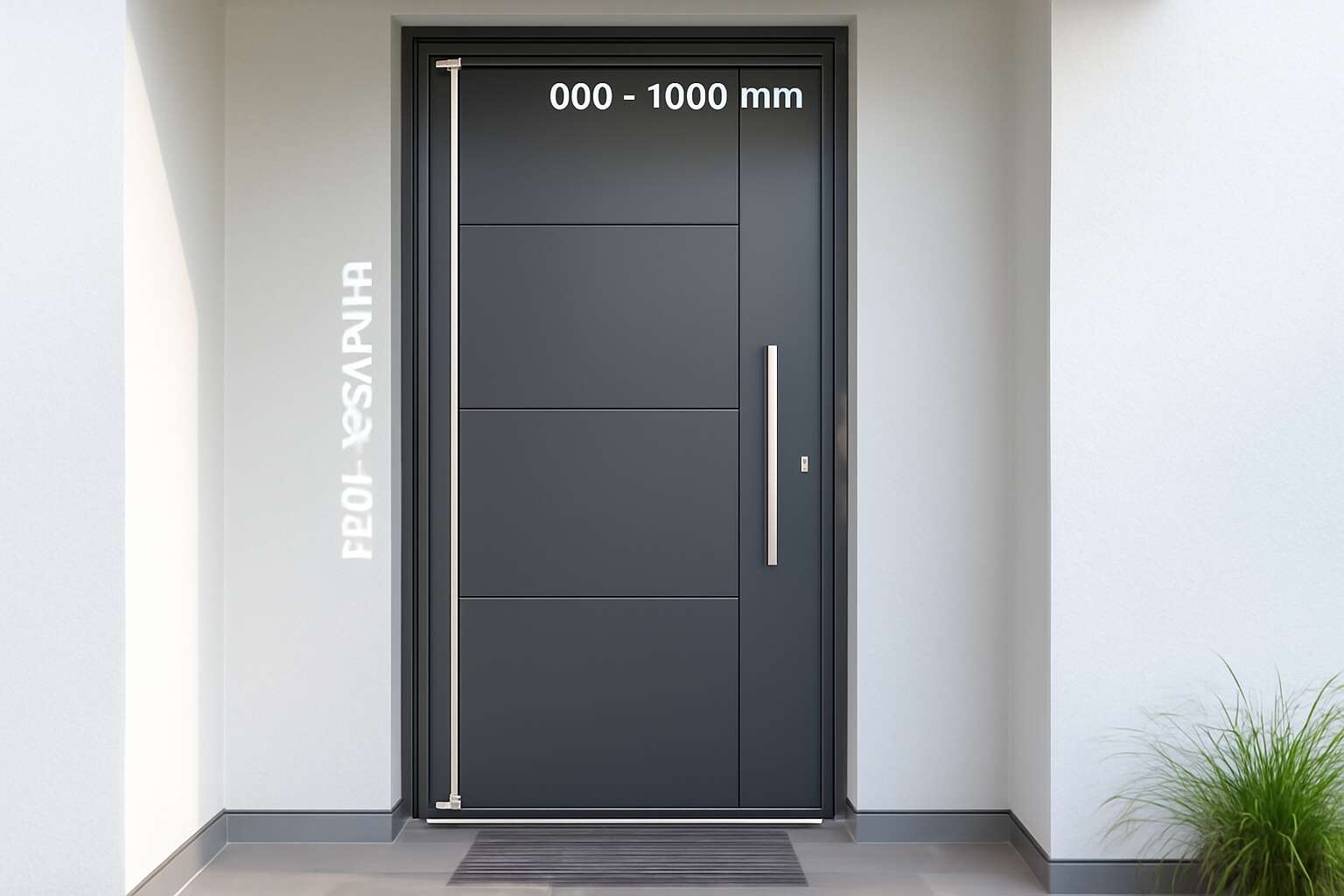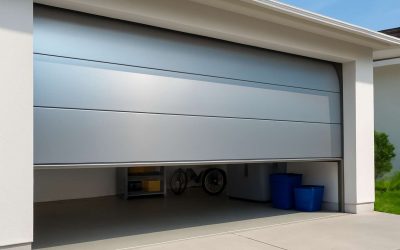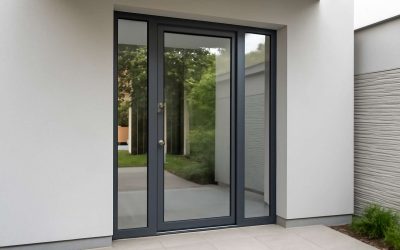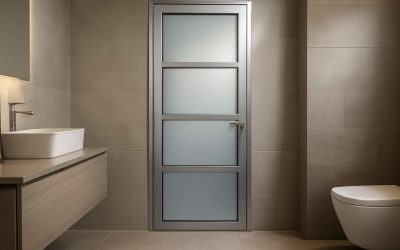Understanding Aluminium Door Dimensions
Overview of Standard Sizes – Introduction to common aluminium door sizes for residential and commercial applications
Aluminium door sizes play a crucial role in defining the aesthetic and functionality of both residential and commercial spaces. When selecting the right aluminium door sizes, understanding the standard dimensions available can streamline the decision-making process and ensure a perfect fit. In South Africa, the demand for versatile and durable aluminium doors is rising, driven by modern architectural trends that favour sleek, minimalist designs.
Typically, aluminium door sizes for residential applications range from compact single doors measuring approximately 900mm in width to expansive double-door systems exceeding 2,400mm. Commercial spaces often require larger, more robust aluminium door sizes to accommodate high traffic and security needs. These standard dimensions simplify customization and installation, providing a reliable foundation for any project.
For those seeking specific measurements, it’s helpful to know the most common aluminium door sizes. These include:
- 900mm x 2100mm (standard single door)
- 1200mm x 2100mm (wider single door)
- 1800mm x 2100mm (double doors for larger entryways)
Understanding these common aluminium door sizes ensures your choice complements the architectural design while optimizing space and security. Whether for a cozy home or a bustling commercial building, the right aluminium door size is fundamental to creating a seamless, stylish entrance that stands the test of time.
Measurement Techniques – How to accurately measure door openings for aluminium doors
Measuring aluminium door sizes accurately is the first step toward a flawless installation—skip this, and even the most stylish door can become a source of frustration. In South Africa, where modern architectural trends demand sleek, minimalist designs, precise measurements are non-negotiable. The process isn’t as simple as a quick glance; it requires meticulous attention to detail.
Start by measuring the width and height of the existing opening at multiple points—top, middle, and bottom. This helps identify any irregularities or squareness issues. For added accuracy, record the smallest measurement to ensure the aluminium door sizes you select will fit perfectly. Remember, even a millimeter can make the difference between a seamless fit and a costly error.
To streamline your measurement process, consider these steps:
- Use a high-quality tape measure for precision.
- Measure the width from jamb to jamb, noting the narrowest point.
- Measure the height from the threshold to the lintel at several points.
By adopting these measurement techniques, you ensure that your aluminium door sizes are perfectly tailored to your space, providing both aesthetic appeal and security. Accurate measurements unlock the potential of your project, transforming a simple door into a statement of style and functionality.
Factors Influencing Size Selection – Door frame thickness, installation requirements, and aesthetic considerations
When selecting aluminium door sizes, a few key factors influence the final decision—think of them as the backstage crew ensuring the star (your door) shines perfectly. One of these is door frame thickness, which can be the difference between a snug, secure fit and a door that wobbles like a jelly on a plate. Thicker frames often mean added durability and a more substantial aesthetic, but they also demand precise measurements to avoid costly surprises.
Installation requirements are another crucial element. In South Africa’s diverse climate and architectural landscape, considering how your aluminium door sizes will behave once fitted is essential. For instance, larger doors might need reinforced frames or special hinges to withstand the elements and daily wear and tear.
And let’s not forget aesthetic considerations—after all, a door isn’t just functional; it’s the statement piece of your home or office. You might prefer a sleek, minimalist profile or a more prominent, bold frame. Either way, understanding how these preferences influence aluminium door sizes helps you avoid the common pitfall of ending up with a door that’s either too big or too small for your space.
To keep things straightforward, here are a few pointers to keep in mind:
- Frame thickness impacts the overall dimensions and installation complexity.
- Climate and usage patterns influence the choice of aluminium door sizes to ensure longevity and security.
- Design preferences will determine the style and proportion of the aluminium door, affecting the final measurements.
By balancing these considerations, you can confidently navigate the world of aluminium door sizes, ensuring a perfect fit that marries form and function with a dash of South African flair.
Standard Aluminium Door Sizes
Typical Widths and Heights – Common dimension ranges for different door types
Aluminium door sizes are more than just measurements—they set the tone for security, style, and functionality. When selecting the perfect fit, understanding typical widths and heights is crucial. Most residential aluminium doors range from 700mm to 900mm in width, providing a balance between space efficiency and accessibility. Heights often hover around 2000mm to 2100mm, ensuring a grand yet practical entrance. For commercial applications, dimensions expand significantly, with widths reaching up to 1200mm or more to accommodate high-traffic flow.
Common dimension ranges for different types of aluminium doors include:
- Standard single doors: 700mm – 900mm wide, 2000mm – 2100mm high
- Sliding aluminium doors: 1500mm – 3000mm wide, 2000mm high
- Double doors: 1200mm or more in width, same height as single doors
These typical sizes serve as a foundation, but custom dimensions are often necessary to match unique architectural demands or aesthetic preferences. Understanding the typical aluminium door sizes helps avoid costly mistakes and ensures a seamless installation—an essential step in unlocking the potential of aluminium doors that elevate any space to a new level of sophistication and security.
Pre-Made vs. Custom Sizes – Pros and cons of stock sizes versus bespoke options
In the realm of architectural nuances, the choice between standard aluminium door sizes and bespoke dimensions reflects a deeper dialogue—one between functionality and artistic expression. Stock sizes, with their ready availability, offer a pragmatic solution that often aligns seamlessly with conventional spaces. They embody predictability, facilitating swift installation and cost efficiency. Yet, their limitations become palpable when architectural visions demand a more tailored approach. Custom aluminium door sizes unlock a realm of possibility, allowing for unique spatial demands and aesthetic aspirations to converge. The trade-off lies in increased lead times and expense, but the payoff is a door that resonates perfectly within its environment—an authentic extension of design intent.
For those seeking to balance practicality with innovation, a nuanced understanding of the pros and cons of each approach becomes essential. Stock aluminium door sizes provide immediate gratification and predictable outcomes, but may fall short in complex or unconventional projects. Conversely, bespoke aluminium door sizes, though more resource-intensive, offer unparalleled flexibility—ensuring that every detail aligns precisely with the project’s vision. Ultimately, the decision hinges on the specific requirements of the space, the desired visual impact, and the budgetary constraints, making the choice between standard and custom aluminium door sizes a pivotal step in crafting a space that is both functional and profoundly expressive.
Industry Standards and Regulations – Standards set by building codes and manufacturers
In the bustling world of aluminium door sizes, industry standards serve as the silent referee ensuring our portals open and close like clockwork. South African building codes stipulate that aluminium door sizes must meet specific height and width parameters—think of them as the stage directions for your architectural performance. These regulations aren’t just bureaucratic hurdles; they safeguard safety, accessibility, and aesthetic harmony.
Manufacturers, on the other hand, often adhere to these standards while adding their own twists, creating a fascinating blend of uniformity and innovation. For example, common aluminium door sizes range from compact 600mm widths perfect for cozy entrances to expansive 3000mm-wide sliding doors that make a grand statement. When selecting the ideal dimensions, it’s essential to consider factors like frame thickness and installation space—because even the most stylish aluminium door sizes won’t look good if they don’t fit the bill.
To navigate this landscape, some industry players prefer to follow a simple list of typical dimensions:
- Residential front doors: usually between 750mm to 900mm wide and 2100mm high.
- Commercial entrances: often larger, ranging from 1000mm to 1500mm wide, with heights of 2200mm or more.
- Sliding glass doors: frequently custom-sized to maximize panoramic views and natural light.
Ultimately, understanding the role of industry standards in aluminium door sizes is key to achieving a perfect balance between functionality and compliance—because in the end, a well-sized aluminium door isn’t just a portal; it’s a statement of design integrity.
Customising Aluminium Door Sizes
Benefits of Custom Sizes – Enhanced fit, security, and design flexibility
When it comes to aluminium door sizes, one size most definitely doesn’t fit all—unless you’re aiming for a door that looks like it was borrowed from a doll’s house. Customising aluminium door sizes offers a smorgasbord of benefits, from a snug, secure fit to a design that makes your property stand out like a peacock in a flock of pigeons. Imagine the security perks of a perfectly tailored fit—no gaps for sneaky intruders or drafts to turn your cosy abode into an Antarctic expedition.
Flexibility in aluminium door sizes also unlocks creative potential, allowing architects and homeowners alike to push boundaries and craft entrances that are as unique as a South African sunset. For those who crave a bit of flair, custom sizes mean you can choose dimensions that complement your aesthetic vision rather than settling for cookie-cutter options. Whether it’s a sleek, narrow entryway or a grand, expansive portal, bespoke aluminium door sizes elevate both function and form.
Common Customisation Options – Additional panels, sidelights, and unique dimensions
In the shadowed corridors of architectural innovation, customisation of aluminium door sizes emerges as a masterstroke of ingenuity. Beyond the mundane realm of standard dimensions, bespoke aluminium doors carve out a narrative as unique as the twilight sky over South Africa’s horizon. When it comes to aluminium door sizes, one size never truly fits all—unless you desire a portal that whispers of the eccentric, the extraordinary.
For those seeking to elevate their property’s mystique, common customisation options are a treasure trove. Additional panels and sidelights transform a simple entrance into a work of art, allowing light to dance through in a spectral ballet. Unique dimensions enable architects and homeowners to conjure entrances that defy the ordinary—be it a slender, mysterious passage or an imposing gateway that commands attention. The artistry lies in tailoring each element to resonate with the aesthetic heartbeat of the space, forging an entrance as evocative as a South African sunset.
Ordering Process for Custom Sizes – Steps to specify and order bespoke aluminium doors
Embarking on the journey to customize aluminium door sizes is an experience woven with anticipation and artistic finesse. The ordering process transforms from a mere transaction into a ritual of creation—an opportunity to craft an entrance that echoes your unique vision. Precision is paramount; each measurement must be as deliberate as a painter’s brushstroke, capturing the intricate nuances of your space.
To ensure your bespoke aluminium door perfectly fits its destined place, start with a clear understanding of your requirements. Carefully assess the opening dimensions, considering factors like frame thickness and installation specifics. Once you have the measurements, you can specify the exact size you desire, allowing your vision to take shape. Many manufacturers offer a seamless process, guiding clients through each step—
- Measuring the space with careful attention to detail
- Selecting the preferred style and customisation options
- Submitting your specifications to a trusted aluminium door supplier
- Receiving a detailed quote and production timeline
- Finalizing the order and preparing for installation
Choosing bespoke aluminium door sizes opens a portal to endless possibilities—fitting odd-shaped openings, creating dramatic entrances, or seamlessly integrating with architectural marvels. The process, though meticulous, ensures that each aluminium door becomes a harmonious extension of your design narrative, crafted precisely for your South African sanctuary. In this way, every custom dimension becomes a testament to the artistry and ingenuity that define modern aluminium craftsmanship.
Impact of Door Size on Performance and Security
Energy Efficiency – How size affects insulation and heat loss
The size of an aluminium door can dramatically influence its overall performance and security. Larger doors often create a striking entrance but may also pose challenges in maintaining insulation and energy efficiency. An oversized aluminium door might allow more heat to escape during South Africa’s chilly nights or let in unwanted heat during scorching summer days, impacting energy consumption. Conversely, precisely tailored aluminium door sizes can optimize thermal performance, ensuring your space remains comfortable without excessive energy costs.
Security is another critical consideration affected by door size. Heavier and larger aluminium doors require reinforced locking mechanisms and sturdy frames to withstand potential intrusions. It’s essential that the size of your aluminium door is matched with robust hardware and installation techniques to enhance safety. When choosing bespoke aluminium door sizes, consider not just aesthetic appeal but also how the dimensions influence energy efficiency and security. Properly sized doors can significantly reduce heat loss and strengthen your home’s protective barrier, transforming your entryway into a fortress of comfort and safety.
Structural Integrity – Importance of correct sizing for durability
The size of an aluminium door isn’t just about making a grand entrance; it directly impacts the structural integrity and long-term performance of your installation. An improperly sized door can compromise security and durability, leaving your property vulnerable. When aluminium door sizes are too large, the weight increases significantly, putting stress on hinges, locks, and frames. This can lead to accelerated wear and potential failure over time, especially if hardware isn’t reinforced accordingly.
Choosing the correct aluminium door sizes ensures that the door’s frame remains sturdy and resilient against daily use and external forces. Proper sizing also allows for the optimal distribution of load, reducing the risk of warping or bending. For high-traffic entrances, consider reinforced frames and heavy-duty hardware—these are essential for maintaining performance and security. Remember, a well-sized aluminium door isn’t just about aesthetics; it’s about creating a reliable barrier that withstands the test of time and elements.
In fact, the importance of correct sizing extends beyond structural concerns. It enhances security by ensuring the locking mechanisms align perfectly within the frame, thwarting potential intrusions. A door that is too loose or too tight can weaken overall safety, regardless of how robust the hardware is. Therefore, meticulous measurement and adherence to industry standards are critical when selecting aluminium door sizes—precision here guarantees durability, safety, and peace of mind.
Security Considerations – Size-related security features and vulnerabilities
The size of an aluminium door can dramatically influence its performance and security. Larger doors, while impressive in appearance, often come with increased weight that tests the limits of hinges and locking mechanisms. If an aluminium door size isn’t carefully calibrated, it may compromise safety, making it easier for intruders to exploit vulnerabilities. Properly sized doors distribute load evenly, safeguarding against warping or bending that could weaken security features.
Security considerations become even more critical when contemplating aluminium door sizes. Oversized doors can create gaps or misalignments, diminishing the effectiveness of locks and hinges. Conversely, doors that are too tight may hamper smooth operation, leading to wear and tear over time. For enhanced security, incorporating size-related features such as reinforced frames or additional sidelights can significantly bolster resistance against forced entry.
In the realm of aluminium door sizes, precision isn’t just about aesthetics; it’s about fortifying your property. An accurately measured door ensures that security hardware aligns perfectly, reducing the risk of vulnerabilities. Whether opting for standard or custom sizes, understanding how size impacts both performance and security is paramount for creating a resilient, stylish entrance. After all, a well-sized aluminium door offers peace of mind along with undeniable curb appeal!
Choosing the Right Aluminium Door Size for Your Property
Residential Applications – Front doors, patio doors, and interior options
Choosing the right aluminium door size for your property is an art as much as it is a science. In South Africa’s diverse climate and architecture, selecting an appropriately sized aluminium door can transform a space from mundane to magnificent. Residential applications—be it front doors, patio doors, or interior separators—demand a harmony of proportion and purpose.
The dimensions of aluminium door sizes influence not only aesthetic appeal but also functionality. For instance, a grand entrance may call for a wider, more imposing frame, while a cozy interior passage benefits from more modest proportions. When considering aluminium door sizes, it’s vital to measure accurately—an inch off can compromise security and energy efficiency.
For those seeking perfect fit and bespoke elegance, custom sizes often outperform stock options. They allow for a seamless integration with your home’s unique architecture—enhancing security, insulation, and overall design. In the realm of aluminium doors, size truly matters—dictating the durability, safety, and visual impact of your investment.
Commercial and Industrial Uses – Security doors, large entranceways, and partition doors
Choosing the right aluminium door size for commercial and industrial uses is an exercise in balancing security, functionality, and aesthetic appeal. In environments such as warehouses, retail outlets, or industrial facilities, door dimensions can significantly influence operational efficiency and safety. Larger entranceways, for instance, require substantial aluminium door sizes to accommodate forklifts or delivery trucks, ensuring smooth logistics without compromising structural integrity.
Security doors and partition doors often demand precise measurements to meet both safety standards and practical needs. An ill-fitted door can become a vulnerability, while correctly sized aluminium doors reinforce the strength and resilience of your property. When selecting aluminium door sizes for these applications, consider the flow of traffic, the volume of load-bearing activity, and the potential for future expansion.
In many cases, opting for custom sizes rather than stock options allows for a perfect fit—enhancing security, facilitating ease of use, and maintaining the sleek, professional appearance that your business demands.
Design and Aesthetics – Balancing size with style and architectural harmony
When it comes to harmonising your property’s design and aesthetics, choosing the right aluminium door sizes is essential. An oversized door can overpower a delicate façade, while a petite entrance might diminish the grandeur of an expansive space. Striking the perfect balance requires a keen eye for architectural harmony and a deep understanding of how size influences visual flow.
In South Africa’s diverse building landscape, custom aluminium door sizes often emerge as the hero—allowing designers and property owners to craft entrances that are both functional and stunning. Whether it’s a sleek front door that commands attention or a discreet internal partition, the dimensions must complement the overall style without sacrificing practicality.
For those seeking to elevate their property’s aesthetic appeal, consider integrating unique features such as sidelights or additional panels. These customisation options, paired with precise measurements, ensure your aluminium door sizes enhance the existing architecture seamlessly, transforming everyday entryways into captivating focal points. Embracing bespoke dimensions unlocks a world of possibilities—where size and style converge in perfect harmony!
Maintenance and Adjustments for Aluminium Doors
Maintaining Proper Fit – Alignment, sealing, and longevity
Maintaining the perfect fit of aluminium doors is an art that extends beyond initial installation. When properly cared for, these doors can stand the test of time, retaining their seamless alignment and functional integrity. Regular adjustments to hinges and rollers are essential to prevent sagging and ensure the door remains flush with its frame, preserving both aesthetic appeal and security.
Sealing also plays a pivotal role in prolonging the lifespan of aluminium doors. Over time, weather elements can cause seals to degrade, compromising insulation and inviting drafts. Inspecting and replacing these seals periodically guarantees optimal energy efficiency, especially in South Africa’s diverse climate. Remember, a well-maintained aluminium door not only enhances curb appeal but also fortifies your property against the elements.
For those seeking longevity and precision, consider engaging professionals who can perform meticulous adjustments, ensuring the aluminium door sizes are perfectly aligned. Whether it’s minor tweaks or comprehensive realignment, these measures safeguard the structural integrity and aesthetic harmony of your aluminium doors, securing their role as both functional and elegant entryways.
Adjusting Door Size Over Time – When and how to resize or modify existing doors
Aluminium door sizes aren’t static; they evolve with the changing needs of a property. Over time, adjustments may be necessary to maintain a perfect fit, especially when dealing with high-traffic or heavily used entrances. Recognising when your aluminium doors need resizing is crucial to preserving their security and aesthetic appeal. If a door begins to sag or feels less secure, it’s often a sign that the original aluminium door sizes no longer align with the frame, necessitating a professional assessment.
Resizing or modifying existing aluminium doors involves precise techniques that safeguard structural integrity. For instance, minor adjustments to hinges or rollers can restore proper alignment, but in some cases, a complete resizing might be warranted. When resizing, experts typically follow these steps:
- Measure accurately to determine the new dimensions.
- Disassemble the door if necessary, ensuring minimal damage.
- Cut or reshape the aluminium panel with specialized tools.
- Reinstall with careful attention to sealing and alignment.
Engaging professionals ensures these modifications uphold the industry standards and regulations, especially in South Africa’s diverse climate. Remember, proper resizing not only enhances the visual harmony of your aluminium door sizes but also bolsters security and energy efficiency. When it comes to aluminium door sizes, precision is everything—an imperfect fit can compromise both safety and comfort, so don’t hesitate to seek expert intervention for these crucial adjustments.




0 Comments